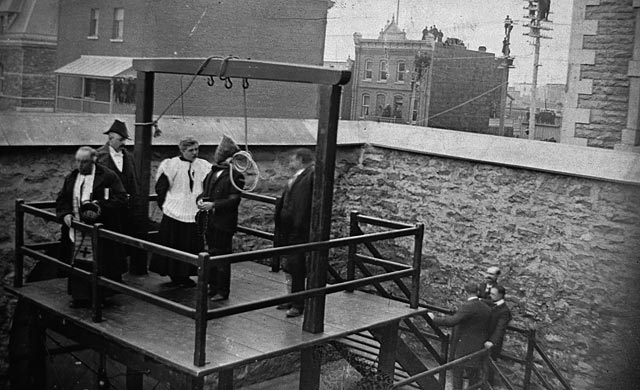
Forty years ago, Canada took the remarkable step of eliminating the death penalty from the criminal code. The move was a huge leap forward both for Canada, and for the world. At the time, the death penalty was a common feature on global criminal codes.
Canada was one of the first countries in the world to move to eliminate capital punishment. Today, according to Amnesty International, the number of counties that have eliminated the death penalty in law or practice has risen to 140 – nearly two-thirds of countries around the world.
The death penalty was a staple of the criminal code in Canada since its days as a British colony. From the time of Canadian Confederation in 1867 (the beginning of reliable record-keeping for executions) 710 people were executed under the death penalty. These figures include 697 men and 13 women.
Hanging was the primary method of execution used for civilians – those in the military were traditionally executed by firing squad. Hanging was seen as a humane form of execution. Various innovations in the process of hanging such as the 5 ft and 7ft drop from a raised platform ensured that the process was quicker and more effective than raising the person from the ground using a rope.
The bloodbath caused by the guillotine in the French revolution and in the Reign of Terror turned public opinion away from these more gruesome methods. There is only one recorded occasion where the guillotine was used in North America. Off the coast of Newfoundland are the islands of Saint-Pierre and Miquelon; the only remaining French controlled territories in North America.
In 1889, a resident of Saint-Pierre convicted for the murder of another man on the island was sentenced to death. The guillotine, being the official method of execution in France, was to be used for the occasion. Not having access to the machine, a guillotine had to be shipped from France and according to records, it was not in good working conditions when it arrived. To this day, that guillotine remains in a museum in Saint-Pierre.

In the 20th century, the death penalty was becoming less accepted by the public. The last execution in Canada was the double hanging of Arthur Lucas and Ronald Turpin on December 11, 1962, at Toronto’s Don Jail. Outside of the jail, protesters gathered and shouted outside the jail in the hours before the two men were hanged.
The move to finally abolish the death penalty came in 1976 when the Government of Prime Minister Pierre Treadau introduced Bill C-84. The legislation aimed to remove the death penalty from the criminal code (the death penalty was finally removed from military law in 1998) and was put to a free vote in House of Commons. It narrowly passed with the final tally of 130:124.
Today, the death penalty still remains in criminal codes around the world. Amnesty International reported that in 2014, at least 2,466 people were sentenced to death worldwide – up 28% on 2013.